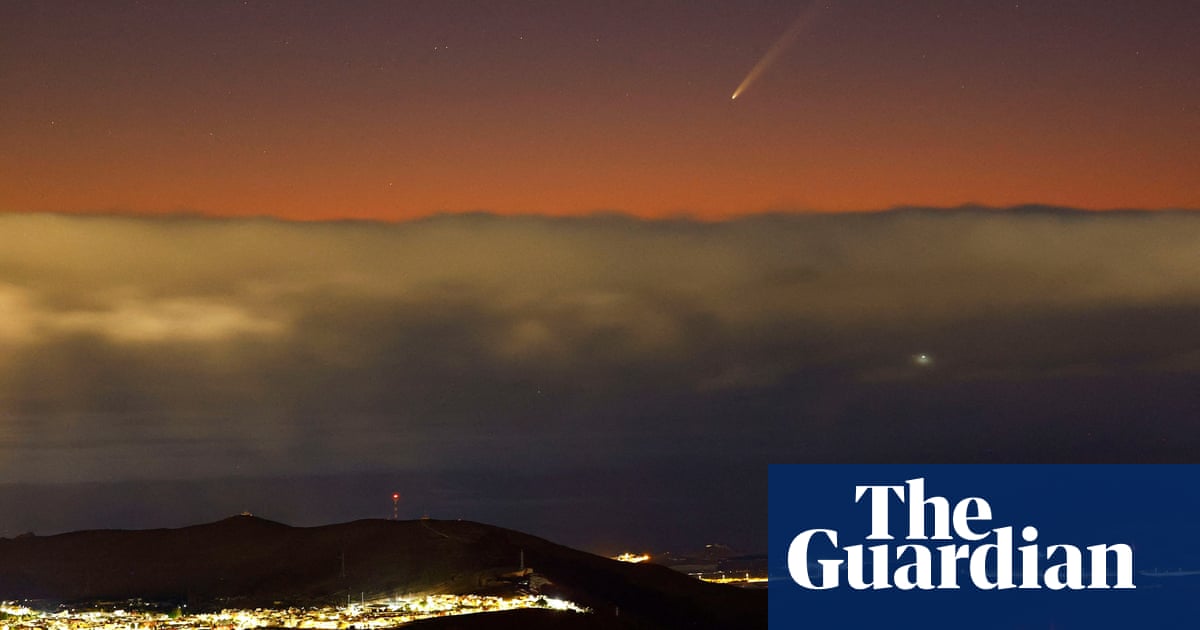A comet that has not been seen from Earth since Neanderthals were alive and kicking has reappeared in the sky, with astronomers saying it might be visible to the naked eye.
Comet C/2023 A3 (Tsuchinshan–Atlas) was discovered by astronomers early last year, and is thought to orbit the sun about every 80,000 years on a highly elongated path.
Dr Gregory Brown, the senior public astronomy officer at the Royal Observatory Greenwich, said the comet was thought to have originated in the Oort cloud, which lies beyond Neptune’s orbit.
“[This is] the vast, roughly spherical region around the sun, which is has icy remnants of the formation of the solar system,” he said.
But now the comet is in our neck of the woods. Having made its closest approach to the sun at the end of last month, it is expected to do the same to Earth around 13 October.
“The thing about comets is that the closer that they are to us, to the Earth, the brighter they are, but also the closer they are to the sun, the brighter they are. So the closest approach isn’t necessarily going to be the brightest time,” said Brown, noting that may instead fall around 9 October.
At that point, however, the comet will be almost directly between the Earth and the sun. As a result, said Brown, the best time to look for it will be a few days before and after.
“Naked-eye-visible comets are rare enough as it is, and this one has the potential to be amongst the brightest that we’ve seen in the last few decades. So it’s certainly worth a go,” he said.
Brown said it was difficult to be sure how bright the comet would become as it approached.
“By the looks of it, it is already visible to the unaided eye in good conditions, and there is a chance that it will get considerably brighter,” he said. “But how bright? We honestly don’t know.”
Brown said stargazers in the northern and southern hemispheres had a chance of glimpsing the comet.
At present, he added, viewers should look east in the early morning before sunrise, towards the constellation of Sextans.
after newsletter promotion
But, he said: “It’s going to swing by the other side of the sun over the course of the next few days.”
As a result, from 13 October, Brown said the best chance of seeing the comet is in the late evening, after sunset, looking west towards the constellation of Boötes.
Brown said the comet was likely to appear as a smudge in the sky to an unaided eye – although its tail should be visible with a pair of binoculars or a small telescope.
Even if the show is not as spectacular as experts hope, stargazers can enjoy the knowledge that they are among the first to clap eyes on the comet since the stone age.
“And obviously, there’s no way of knowing, all the way back then, how bright the comet would have been and how easy it would have been to see,” said Brown.

